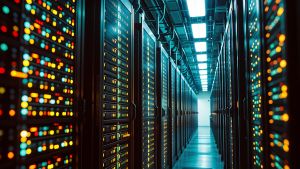Jacquelyn Oduro, director of Manitoba Heavy Construction Association’s WorkSafely program, says there are several ways Artificial Intelligence (AI) can improve heavy construction worksite safety.
“There are so many safety risks in heavy construction, such as excavation and trenching accidents, accidental start-ups from energized equipment, moving paving equipment, not to mention electrical hazards,” says Oduro, who worked in heavy equipment before becoming an occupational health and safety expert. “AI can already reduce some of those risks, and in the future I expect it will reduce even more.”
David Cain, a patent attorney in suburban Washington, D.C. with a longstanding interest in AI, says the technology can enhance safety on construction sites in many ways.
“It’s already being used for risk assessment and predictive analysis,” says Cain. “By analyzing past project data, AI can identify patterns and trends that can help predict potential safety risks. AI can analyze data from previous accidents and near misses to identify high-risk activities, locations and times of day.”
In addition to risk assessment, Cain says, predictive machine maintenance can prevent incidents before they happen.
“By analyzing data from equipment sensors, AI can predict when a piece of equipment is likely to fail,” Cain says. “This enables companies to service or replace equipment before it breaks down.”
AI has also made possible real-time monitoring of construction sites.
“Using advanced image recognition and machine learning algorithms, AI can monitor construction sites in real-time to detect safety violations,” says Cain. “For example, AI can identify workers engaging in potentially dangerous activities, such as not wearing proper safety equipment.”
AI is also being used to operate construction equipment autonomously.
“By reducing reliance on human operators, and performing tasks with precision and consistency, AI can help minimize the risk of accidents caused by human error,” says Cain.
Looking ahead, as AI technology continues to evolve and improve, it’s likely it will have a greater impact on construction safety.
“For instance, AI could be used to analyze a wide range of data, including weather patterns, worker health records and equipment usage data in order to identify potential safety risks that might not be apparent to human analysts,” says Cain. “This could enable more proactive safety measures.”
AI’s predictive capabilities could also be used to develop more accurate risk assessment models.
“Many of today’s models rely on historical data and might not account for all the unique circumstances of each construction project,” says Cain. “AI could be used to create more sophisticated models that capture a wider range of variables, resulting in more accurate predictions and, therefore, more effective safety measures.”
Safety training could be enhanced by integrating AI with other technologies.
“For example, AI could be used with virtual reality or augmented reality to create realistic training simulations, to enable workers to practice handling dangerous situations in a safe environment,” says Cain.
Finally, AI could improve safety during the design phase of construction projects.
“AI algorithms could analyze building designs and identify potential safety hazards before construction begins,” says Cain. “This could include everything from identifying structural weaknesses to suggesting modifications that would make the building safer.”
Cain says while AI offers significant benefits for construction safety, it should be integrated carefully, ensuring it complements existing safety practices and protocols.
“Although AI can significantly reduce risks, it cannot eliminate them entirely,” he says.
Christl Aggus, CEO of the Canadian Society of Safety Engineering, says her organization has started using AI, “but cautiously.”
“We’ve been using it to help draft forms and write policy documents,” says Aggus. “But there are very interesting future possibilities for AI and construction safety, such as wearables to control stress from heat, noise and vibration. However, the possibilities need to be tested first before they’re deployed.”
David Dunham, the BC Construction Safety Alliance’s regional safety adviser in in Fort St. John, says AI vision can analyze photos, identify hazards and conduct ergonomic risk assessments.
It can also help with incident investigations and creating visuals from Excel files.
“AI is good for providing useful context and to help asking better questions of the data you’re analyzing,” says Dunham. “AI can make life easier for the user, but it can also misinform. Don’t put blind faith in it.”











Recent Comments
comments for this post are closed